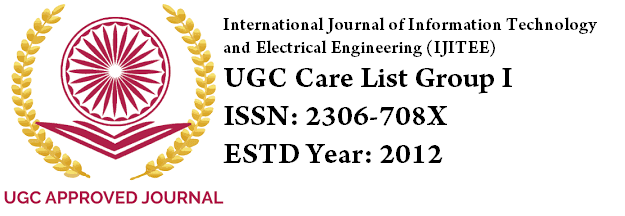Enhancing Computational Efficiency in Distributed Learning Models Using Artificial Intelligence within Cloud Computing Environments
Keywords:
Distributed Learning, Artificial Intelligence, Cloud Computing, Computational Efficiency, Federated Learning, Resource Optimization, Task SchedulingAbstract
Cloud computing, coupled with distributed learning, has revolutionized data-intensive applications. However, achieving computational efficiency remains a critical challenge, especially under resource constraints. This paper explores how artificial intelligence (AI) can enhance the computational performance of distributed learning models in cloud environments. By examining various AI-driven techniques such as federated learning, workload optimization, and energy-efficient task scheduling, we identify core strategies to reduce latency and improve resource allocation. A comparative analysis of recent innovations demonstrates a significant leap in operational efficiency, providing insight for future system architectures.
References
Ottou Omgba, N. T., Kombou, V., & Tambe, P. (2024). Adaptive hierarchical federated learning in cloud environments: Balancing performance, efficiency, and privacy. SSRN Preprints.
Barrak, M. A. (2024). Serverless architectures for scalable peer-to-peer machine learning training. Université du Québec à Chicoutimi.
Subramanyam, S.V. (2019). The role of artificial intelligence in revolutionizing healthcare business process automation. International Journal of Computer Engineering and Technology (IJCET), 10(4), 88–103.
Mukesh, V. (2022). Cloud Computing Cybersecurity Enhanced by Machine Learning Techniques. Frontiers in Computer Science and Information Technology (FCSIT), 3(1), 1-19.
Cao, X., Chen, C., Li, S., Lv, C., Li, J., & Wang, J. (2025). Research on computing task scheduling method for distributed heterogeneous parallel systems. Scientific Reports.
Telmanov, M., Suchkov, M., & Abdiakhmetova, Z. (2025). Strategic processor task allocation through game-theoretic modeling in distributed computing environments. Bulletin of Electrical Engineering and Informatics, 14(1).
Mukesh, V. (2024). A Comprehensive Review of Advanced Machine Learning Techniques for Enhancing Cybersecurity in Blockchain Networks. ISCSITR-International Journal of Artificial Intelligence, 5(1), 1–6.
Hosseinzadeh, M. (2024). Smart QoS-aware resource management for edge intelligence systems. University of Kentucky.
Subramanyam, S.V. (2022). AI-powered process automation: Unlocking cost efficiency and operational excellence in healthcare systems. International Journal of Advanced Research in Engineering and Technology (IJARET), 13(1), 86–102.
Chippagiri, S. (2024). High-performance computing with Kubernetes for cloud enhancement. SSRN Preprints.
Mukesh, V., Joel, D., Balaji, V. M., Tamilpriyan, R., & Yogesh Pandian, S. (2024). Data management and creation of routes for automated vehicles in smart city. International Journal of Computer Engineering and Technology (IJCET), 15(36), 2119–2150. doi: https://doi.org/10.5281/zenodo.14993009
Subramanyam, S.V. (2024). Transforming financial systems through robotic process automation and AI: The future of smart finance. International Journal of Artificial Intelligence Research and Development (IJAIRD), 2(1), 203–223.
Najar, A. A., & Naik, S. M. (2025). AE-CIAM: A hybrid AI-enabled framework for low-rate DDoS attack detection in cloud computing. Cluster Computing.
Dua, A., Aujla, G. S., Jindal, A., & Sun, H. (2024). Green AutoML: Energy-efficient AI deployment across the edge-fog-cloud continuum. Durham University Repository.
Subramanyam, S.V. (2023). The intersection of cloud, AI, and IoT: A pre-2021 framework for healthcare business process transformation. International Journal of Cloud Computing (IJCC), 1(1), 53–69.
S.Sankara Narayanan and M.Ramakrishnan, Software As A Service: MRI Cloud Automated Brain MRI Segmentation And Quantification Web Services, International Journal of Computer Engineering & Technology, 8(2), 2017, pp. 38–48.
Mukesh, V. (2025). Architecting intelligent systems with integration technologies to enable seamless automation in distributed cloud environments. International Journal of Advanced Research in Cloud Computing (IJARCC), 6(1),5-10.
Lo Schiavo, L. (2025). Sharing heterogeneous computing resources in virtualized open radio access networks. IMDEA Networks Institute.
Musaddiq, A., Azam, I., & Olsson, T. (2025). Machine learning for resource management in industrial Internet of Things. Frontiers in Computer Science.
Wang, X., Fei, Z., Zhou, Y., & Hu, J. (2025). Integrated sensing, communication, computation, and intelligence towards IoT: Key technologies and future directions. Journal of Electronics & Information Technology.
Subramanyam, S.V. (2021). Cloud computing and business process re-engineering in financial systems: The future of digital transformation. International Journal of Information Technology and Management Information Systems (IJITMIS), 12(1), 126–143.
ALFahad, S., Parambath, S. P., & Anagnostopoulos, C. (2025). Node selection using adversarial expert-based multi-armed bandits in distributed computing. Computing.
Niyato, D. (2025). Secure resource allocation via constrained deep reinforcement learning. In Proceedings of the Machine Learning for Cyber Security Workshop.
Kumar, K. (2020). Enhancing interpretability and explainability in deep neural networks for artificial intelligence. QIT Press - International Journal of Artificial Intelligence (QITP-IJAI), 1(1), 1-4.
Sankar Narayanan .S, System Analyst, Anna University Coimbatore , 2010. INTELLECTUAL PROPERY RIGHTS: ECONOMY Vs SCIENCE &TECHNOLOGY. International Journal of Intellectual Property Rights (IJIPR) .Volume:1,Issue:1,Pages:6-10.
Priyadarsini, A. (2024). Advancing the understanding of representation learning in artificial intelligence systems. QIT Press - International Journal of Artificial Intelligence (QITP-IJAI), 5(2), 1-5.
Sankar Narayanan .S System Analyst, Anna University Coimbatore , 2010. PATTERN BASED SOFTWARE PATENT.International Journal of Computer Engineering and Technology (IJCET) -Volume:1,Issue:1,Pages:8-17.
Bansal, A. (2020). Predictive modeling and complex system analysis reimagined through deep learning-powered artificial intelligence. QIT Press - International Journal of Artificial Intelligence and Deep Learning Research and Development, 1(1), 1-4
Navya, M. (2024). Deep learning as the foundation for advanced cognitive automation and human-machine collaboration in artificial intelligence. QIT Press - International Journal of Artificial Intelligence and Deep Learning Research and Development, 5(2), 1-4.
Downloads
Published
Issue
Section
License
Copyright (c) 2025 J. Powars Adams (Author)

This work is licensed under a Creative Commons Attribution-NonCommercial 4.0 International License.

